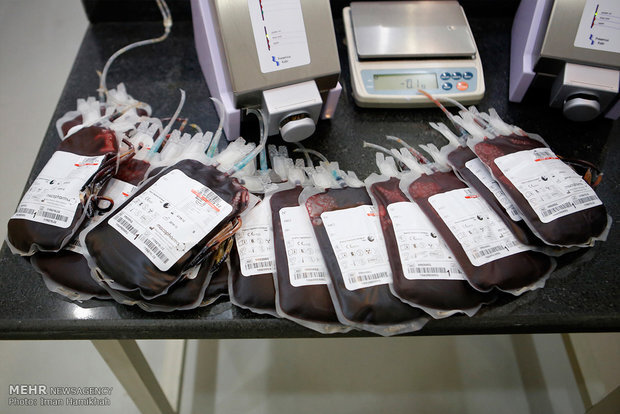Blood storage at acceptable levels

TEHRAN – The average level of blood reserves in the country is 9.6 days, which is an acceptable level, a spokesman for the Blood Transfusion Organization, has said.
It should be noted that the need for blood and blood products is constant and blood donation should be done continuously, IRNA quoted Abbas Sedaghat as saying on Wednesday.
With the establishment of the national blood network, we have been able to meet all the needs of medical centers, including more than 900 hospitals that have blood banks, he explained.
Also, we have raised the standards, before this definition, the average level of blood storage included four to five days, but the level doubled as much as 8 to 9 days, in order to manage blood supply better, he noted.
Donating blood is not related to a specific season and time, and blood donors should keep in mind to donate blood regularly and save the lives of patients in need, he highlighted.
Every year, with the onset of the cold season and air pollution, the blood donation rate decreases, while the need for blood is constant and those who need blood should not be forgotten.
Blood donation in Iran
According to the reports provided by the World Health Organization, Iran competes with Europe and the U.S. in blood donation indices, even outpacing them in one or two cases.
Iran is among the countries of the Eastern Mediterranean region as a reference in the field of blood donation activities.
While blood donation in 70 countries still depends on replacement or paid donors, Iran is the first country in the region that has enjoyed voluntary blood donation by 100 percent since 2007.
More than 85 percent of all donated blood worldwide is used to produce blood products, while the rate is 65 percent in Eastern Mediterranean countries. Iran ranks among the highest-income countries in terms of converting more than 97 percent of the blood donated by people to plasma-derived medicinal products (PDMP).
Only 55 of 171 countries produce PDMP through the fractionation of plasma collected in the reporting country. A total of 90 countries reported that all PDMPs are imported, 16 countries reported that no PDMP was used during the reporting period, and 10 countries did not respond to the question, according to WHO.
Iran currently has the highest blood donation rate in the Eastern Mediterranean region, so out of 9.9 million blood donation units in this region, more than two million belongs to Iran.
Also, the index of blood donation is 25 per 1,000 populations, while in the member states of the Eastern Mediterranean region, this number is 14.9 per 1000.
Over 2.1 million Iranians donate blood annually, Bashir Haji-Beigi, the former Blood Transfusion Organization spokesman, said in June.
There are currently 178 blood donation centers in the country, with Fars, Khorasan Razavi, Khuzestan, Tehran, and Mazandaran provinces having the largest number of blood donation centers, he stated.
FB/MG
